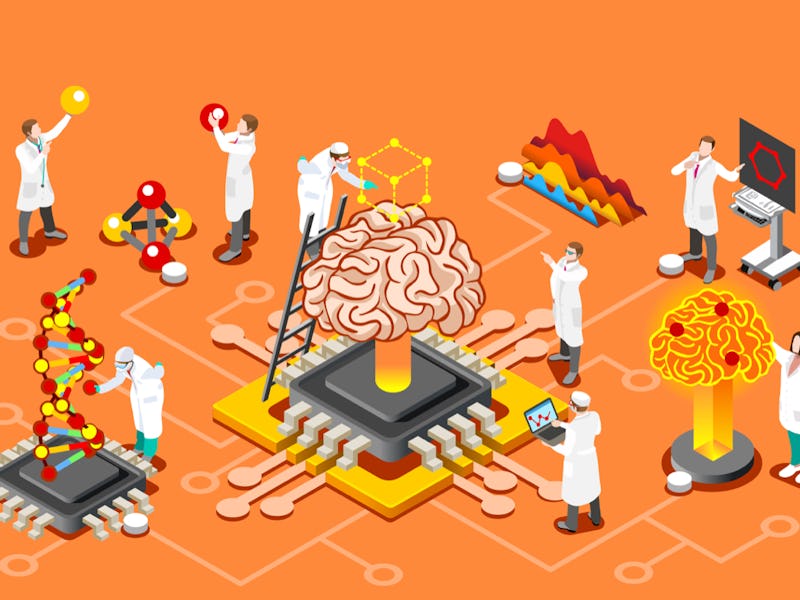This computer chip wants to read your mind
And it could help create better prosthetic and speech devices.

Understanding the human brain is a monumental task, but after years of toiling a team of material scientists have designed a chip that allows us to read people's minds better than ever.
Research published Friday in the journal Science Advances describes how the joint Stanford team developed a brain-reading chip that takes the best of existing brain-computer interface technology, like that used in Elon Musk's Neuralink, and melds it with highly scalable silicon chip technology. As a result, the researchers say their chip can record more data while simultaneously being less invasive than previous models.
The first author on the paper and graduate student in materials science and engineering at Stanford, Abdulmalik Obaid, said in a statement that the team was able to achieve this by figuring out how to adapt 2D chip technology to fit a 3D human brain.
"Nobody has taken these 2D silicon electronics and matched them to the three-dimensional architecture of the brain before," said Obaid. "We had to throw out what we already know about conventional chip fabrication and design new processes to bring silicon electronics into the third dimension. And we had to do it in a way that could scale up easily."
This microwire array can be inserted into a patient's brain to "take a movie of neural activity."
Essentially, their design works by inserting microwires that are less than the width of a human hair (and look like a miniaturized fistful of raw spaghetti) into exposed brain tissue and connecting those wires to a silicon chip to receive electric signals. Unlike traditional chips, which have about 100 microwires creating 100 channels of communication for the neural signals, this new chip design is capable of creating 1000s of channels.
Nick Melosh, professor of materials science and engineering at Stanford and co-senior author of the paper, said in a statement that this approach allowed for extremely high-resolution signals.
"Electrical activity is one of the highest-resolution ways of looking at brain activity," said Melosh. "With this microwire array, we can see what's happening on the single-neuron level."
In addition to high-resolution, the researchers also write that during their small animal trial they were able to record neural signals from deep in a rat's brain without having to physically remove any part of the tissue, as would have previously been necessary.
After years of working to refine their approach, Obaid said it was exciting to see how well it worked in practice.
"We had to take kilometers of microwires and produce large-scale arrays, then directly connect them to silicon chips," said Obaid. "After years of working on that design, we tested it on the retina for the first time and it worked right away. It was extremely reassuring."
After the success of their small animal model, the researchers are now looking to test how well their model would work on larger animals and eventually on the human brain.
With the density and high-resolution made possible by their chip, the researchers hope that in the future it can be used to help improve human prosthetics, such as devices that can translate electric signals from the brain into robotic limps or hands, as well as devices that could restore vision or speech in a patient.
Abstract: Multi-channel electrical recordings of neural activity in the brain is an increasingly powerful method revealing new aspects of neural communication, computation, and prosthetics. However, while planar silicon-based CMOS devices in conventional electronics scale rapidly, neural interface devices have not kept pace. Here, we present a new strategy to interface silicon-based chips with three-dimensional microwire arrays, providing the link between rapidly-developing electronics and high density neural interfaces. The system consists of a bundle of microwires mated to large-scale microelectrode arrays, such as camera chips. This system has excellent recording performance, demonstrated via single unit and local-field potential recordings in isolated retina and in the motor cortex or striatum of awake moving mice. The modular design enables a variety of microwire types and sizes to be integrated with different types of pixel arrays, connecting the rapid progress of commercial multiplexing, digitisation and data acquisition hardware together with a three-dimensional neural interface.